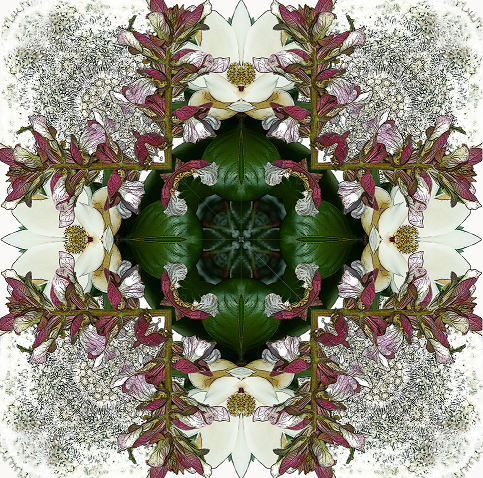Mandalas are often called the window to the soul because they often are expressions of our true nature or the true center of our cosmos. They typically have repetitive symbols in an integrated structure organized around a unifying center. A Tibetan Buddhist description of a mandala calls it, “a blueprint for buddha hood” and the symbols presented in the mandala remind the viewer “of the imminence of sanctuary in the universe and its potential in himself.” Mandalas are used for focused meditation to promote the experience of boundless compassion for others by celebrating the unity of all things.
The word mandala has origins in ancient Sanskrit and is used interchangeably with circle, indicating that there is no beginning or end to the mandala, and the journey to individuation also simultaneously connects us with community through empathy and curiosity regarding the patterns displayed. These symbols can be anything from animals and plants to colors and geometry, so long as they repeat rhythmically withing the grid. Carl Jung observed the cultural overlap of mandala use to experience wholeness and facilitate healing through the creation of art to, “restore a previous existing order” or give “expression and form to something that does not yet exist.” He also considered them archetypal symbols in themselves, but also observed that many of the symbols selected to compose them across cultures had universal archetype. A Jungian archetype is a universal pattern, or symbol that represents a belief system and can inform behavior subconsciously. So the symbols in your mandala may have origins in your subconscious from the experience of an ancient ancestor that is potentially informing your behavior. Presence with this and the embodied awareness it delivers can serve to unlock and unite your psyche with others”, and others as well as guide your meditations to higher self realization.
And the mandala has returned to vogue in meditation circles, perhaps representative of our global desire to express and connect, and the design team is using them as tools to understand the powerful meaning projected by certain symbols, and how to apply them to life and design. We will be exploring a couple approaches to creating mandalas including selecting the symbols for direct expression and reminder of their meaning, as well selecting symbols that seem to stand out in our environments, which we are drawn to, and then creating a mandala with them to study their meaning. From there the possibilities are endless, mandalas can uplift you, ground you, be spiritual or playful. They also can serve as a personal crest and even find there way into your garden beds through color and pattern- which we will explore!
Take a look at the beautiful and inspiring Mandalas our designers, Samantha and Alexxa, created and see if the symbols resonate with you. We will decode their meaning for you next month and present alternate mandalas created with the opposite approach described. Join us on the journey and share your mandalas or thoughts and experiences with certain symbols like; eyes, hexagons or stars. We can’t wait to see what you come up with.



- John Mini Design Team; Jack, Alexxa, & Samantha